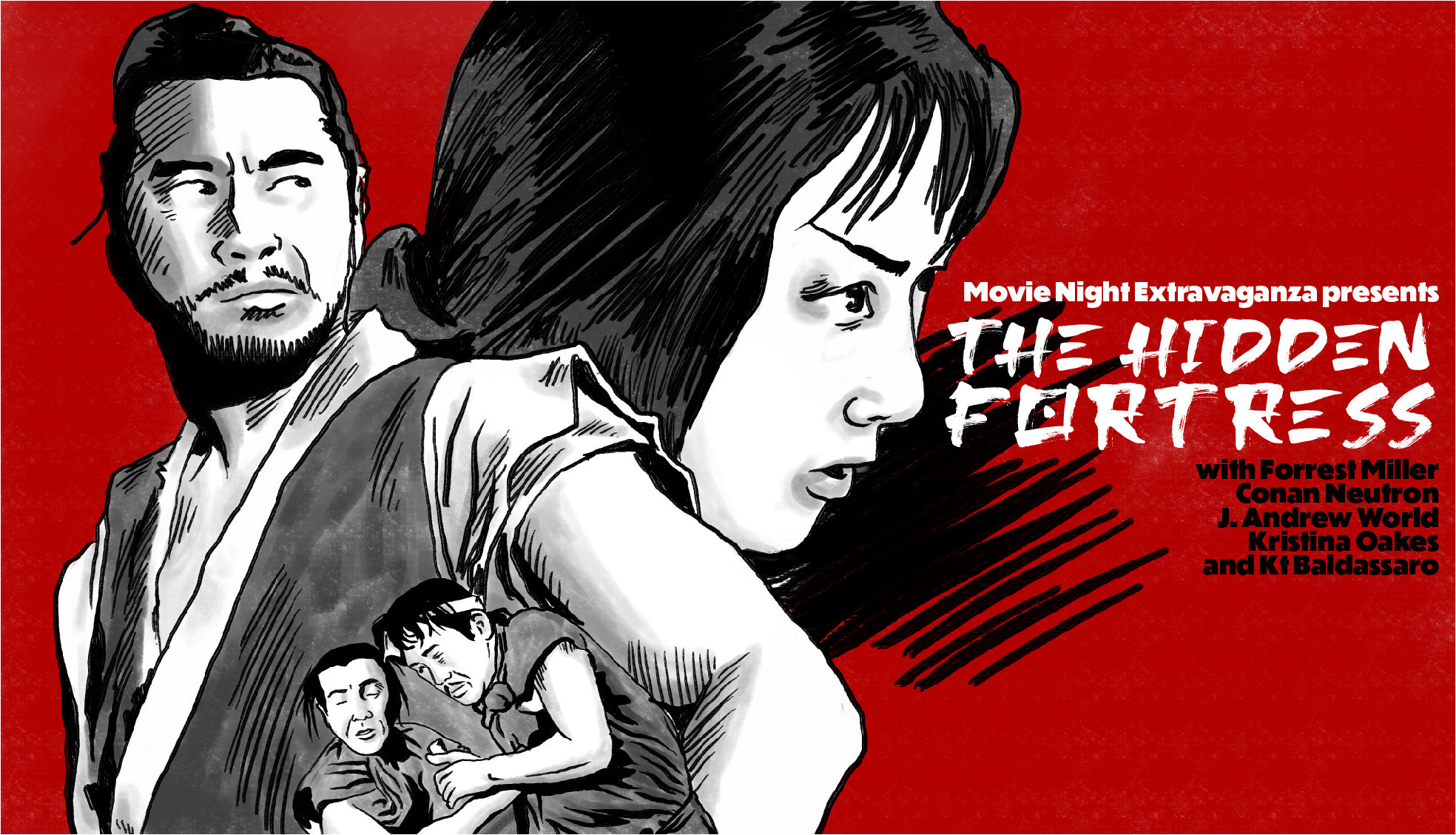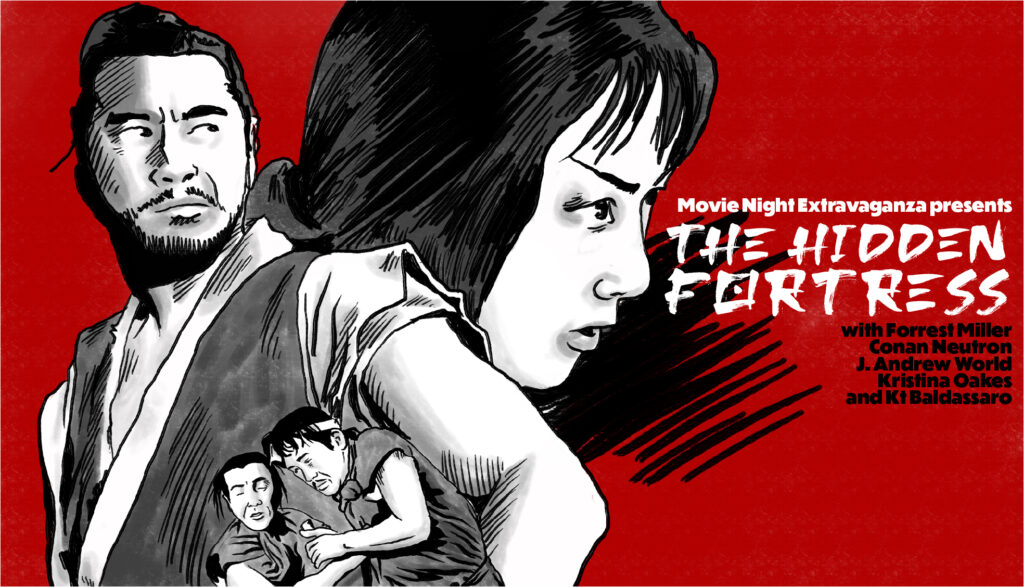
“I have enjoyed the journey. The happiness of these days, I would have never known living in the castle. I’ve seen people as they are, without pretense. I’ve seen their beauty and their ugliness with my own eyes.“
Forrest Miller, Conan Neutron and J. Andrew World are
once again joined by Kt Baldassaro (of What If I Don’t Like It?) to talk about Akira Kurosawa’s The Hidden Fortress as Movie Night Adventure continues on.
A visually thrilling, fantastic adventure movie, a thigh connoisseur’s dream and while he arguably might have made BETTER films, this one (his ostensible popcorn movie) is one of the most watchable and fun.
Notably light for Akira Kurosawa. Yes! It was an inspiration for Star Wars, the wipe transitions, the usage of wide screen and of course Tahei and Matashichi basically being a fortune seeking dirtbag version of C-3PO and R2-D2 narratively blundering and wandering through the tale into increasingly harrowing and interesting scenarios much larger than them, often used to great comedic effect.
Telling the story by centering the characters with the lowest social standing, Kurosawa’s peasants and farmers are always very much a product of their environment with no steady supply of food and money they become desperate self-absorbed, free of all notions of morality or honor and are self-centered greedy little goblins.
It’s amazing that this film was made in 1958 and still has such a compelling story and utterly breathtaking cinematography. His first film utilizing widescreen! The runtime is earned, and the acting still holds up. We speak at length at the symbiosis between Toshiro Mifune and Akira Kurosawa. Actor and director inexorably linked and bringing out the best in each other. This is definitely the case as the heroic Rokurota Makabe (Mifune), who is stoic, badass, comically masculine and giving representation of thigh lovers anywhere whose nuance becomes known over the course of the story.
Princess Yuki (Misa Uehara) is brilliant with her staunch seriousness and intensity. Remarkable for a first-time actress, so the contrast with the bumbling peasants is all the better. Tahei and Matashichi’s antics providing narrative comedic relief and real-life grounding.
Even with the notably lighter tone there is a serious thesis which he was working on thematically that appears here. In the wake of World War II, Kurosawa’s mission with these films, be they Ronin Films, or
Jidaigeki, is to subvert and break down the attachment that his audience has to Feudal Japan and the Pre-War Hierarchies.
His Nobility and Warriors, although they try to follow a moral code, are often vain, ill-tempered, and unnecessarily prone to violence. War, in all of Kurosawa’s Films at this time, is ever-present, brutal, grotesque and unappealing. Pointless.
The Hidden Fortress posits at the end that only through social mobility, like the small amount of mobility that Tahei and Matashichi get at the end, can anyone break free of these historical issues and can Japan
flourish.
But, still, the Hidden Fortress is whimsical, fun and the closest he ever got to a comedy.
Visually thrilling. The huge crowd shots are masterful and this, the first of Kurosawa’s Tohovision features, meaning the first MADE for the widescreen and boy is it! An absolute pleasure and a must-see
film and a great starting point for Kurosawa!
We also speak a bit about his other work such as Seven Samurai (which we covered last year), Ran, Ikiru, High and Low, and Rashomon.
